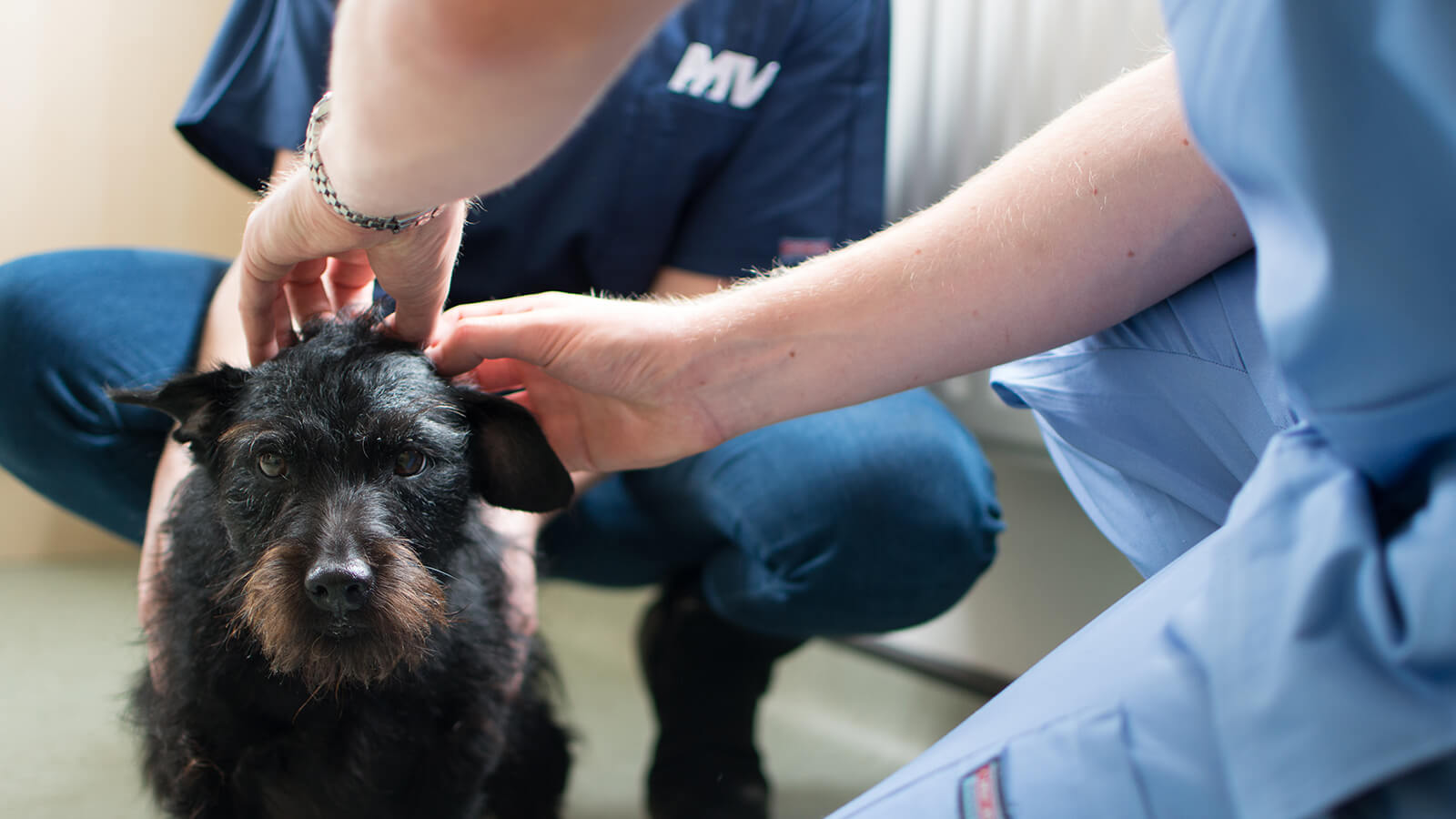
 Menu
Menu
Temporomandibular Joint Luxation in Dogs

What is the temporomandibular joint?
The temporomandibular joint (TMJ) is the joint that connects the lower jaw (the mandible) to the rest of the skull. It is the joint that allows animals (and humans) to open and close their mouths.
What is TMJ luxation?
Luxation (the medical term for dislocation) of the TMJ is when the articular surfaces of the mandible (the part of the mandible that slots into the skull) comes out of place within the joint cavity, allowing movement/weakness of the joint that should not be there.
How can TMJ luxation occur?
Normally luxation of the TMJ occurs due to trauma such as in a road traffic accident.
What does TMJ luxation look like?
A dog with TMJ luxation will not be able to close its mouth on the affected side. There may also be pain whilst the dog is trying to eat or an audible “click” sound when the jaw is moving.
Diagnosis
If you suspect that your dog has TMJ luxation then you should take it to be seen by your local veterinary surgeon. They will physically examine the animal to assess the jaw but in order to get a true diagnosis and formulate a plan, x-rays will be necessary. Due to the location of the TMJ, plain x-ray can sometimes be hard to interpret and advanced imaging with CT, which provides a 3D x-ray, may be required.
Treatment
Treatment of TMJ luxation normally involves manipulating the displaced bone back into place which has to be done under general anaesthesia. If the joint is unstable after being put back in place then post-reduction stabilisation may be needed using a support muzzle. If there are more complicated factors associated with the luxation (i.e. a concurrent fracture) then that will be dealt with concurrently and may require invasive surgery. The jaw can be stabilised with temporary fixation, wiring or dental acrylic. In severe or chronic cases, removal of the articular process of the mandible may be required (excision arthroplasty). The technical difficulty for this procedure is much greater in the dog compared to the cat and therefore the outcome is less predictable.
Post-operative management
Assuming that the TMJ can be reduced, many patients will have a good long term outcome. However, some patients will have ongoing issues with opening and closing the mouth. Occasionally, patients undergoing temporary stabilisation of the jaws will need assisted feeding via a tube placed directly into the oesophagus.
Stay in touch
Follow us on social media and keep up to date with all the latest news from the Grove clinic.

